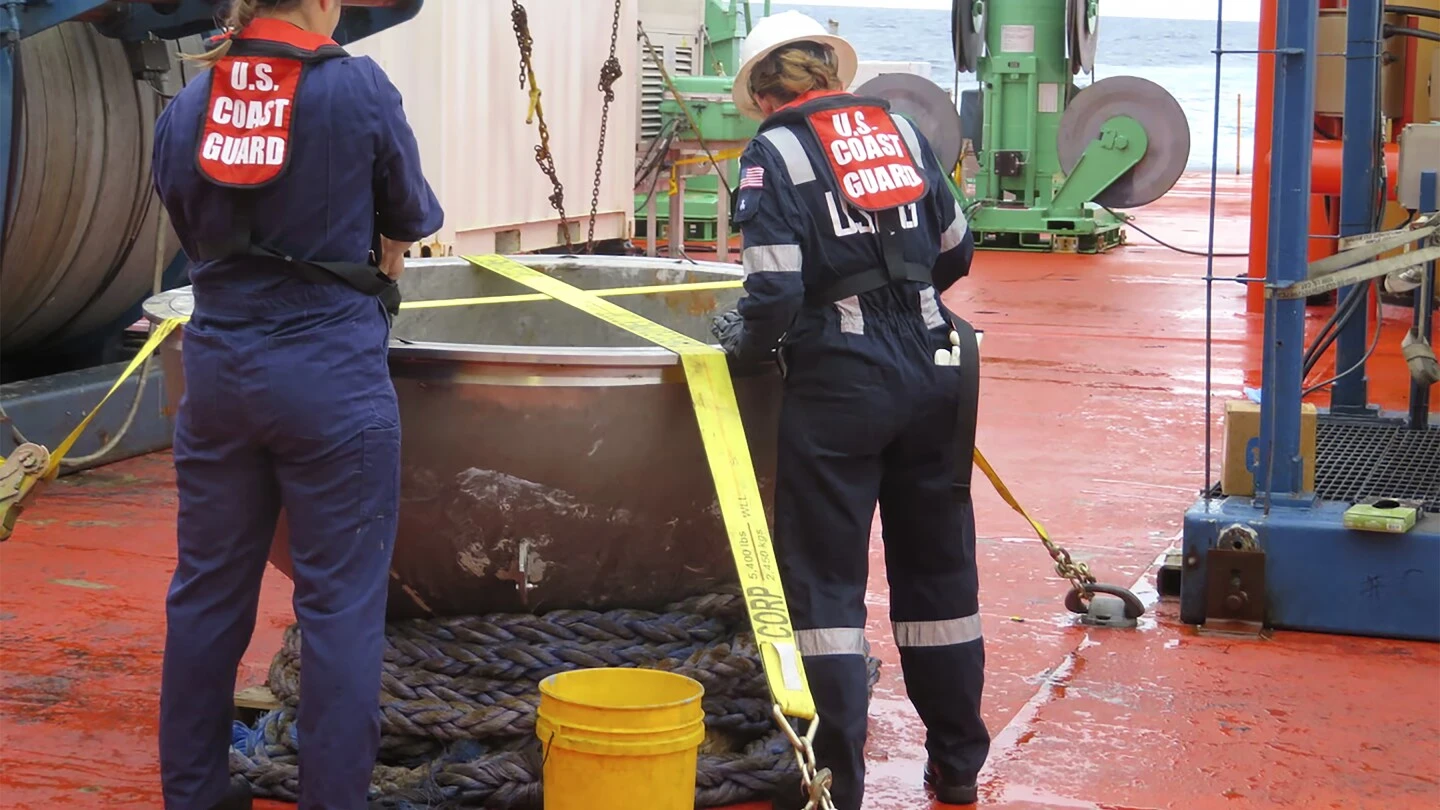The Coast Guard has recovered remaining debris, including presumed human remains, from a submersible that imploded on its way to explore the wreck of the Titanic, killing all five onboard, deep beneath the Atlantic Ocean’s surface, officials said Tuesday.
The Coast Guard said that the recovery and transfer of remaining parts was completed last Wednesday, and a photo showed the intact aft titanium endcap of the 22-foot (6.7-meter) vessel. Additional presumed human remains were carefully recovered from within Titan’s debris and transported for analysis by U.S. medical professionals, the Coast Guard said.
The salvage mission conducted under an agreement with the U.S. Navy was a follow-up to initial recovery operations on the ocean floor roughly 1,600 feet (488 meters) away from the Titanic, the Coast Guard said.



They can still learn something from the materials by looking at how it failed (mostly because the frequency of tests of larger objects at these pressures is limited), but there’s not likely going to be anything surprising, just another data point to help calibrate some material science formulas
Everyone knows exactly how it failed.
They used GLUE to stick carbon fiber to titanium.
All three of those components behave very different under pressure.
Every engineer warned them against the use of carbon fiber and the bonehead CEO insisted because he liked it.
It’s literally an ego trip that got 5 people killed.
Obviously it would fail, yes, but where the failure started and how it propagated can still be interesting. There’s a reason new car models get crash tested, you still want to double check the simulation results. Submarines don’t usually get crush tested because they’re built with huge safety margins instead, bigger margins than you can put in cars
What are you even talking about?
There is no technically beneficial reason to using carbon fiber in a submarine hull. It won’t happen again, and it shouldn’t have happened in the first place.
It’s like making a car out of Swiss cheese, it’s just pointless.
The data is not important.
Do you think the only place it would be useful is for other submarines? It’s still materials science. Any place those same materials are used could in theory benefit (again, probably not anything notable, but data on how it behaves in extreme circumstances can be useful anyway)